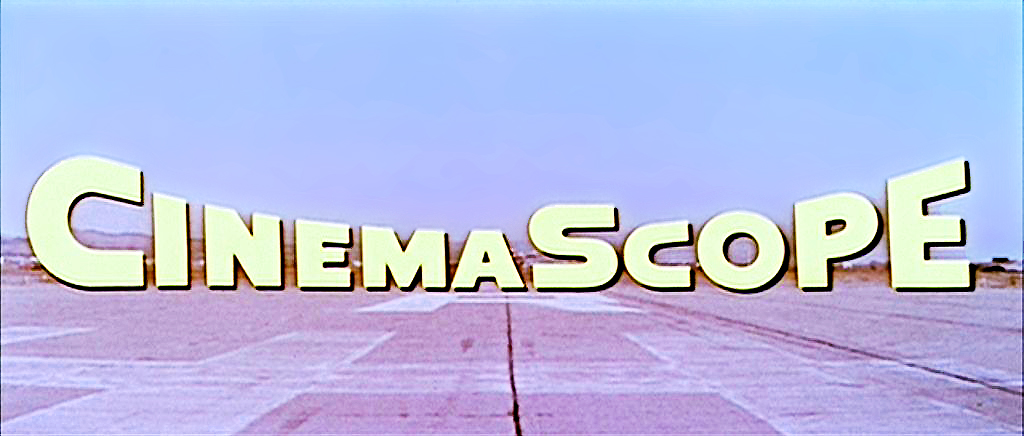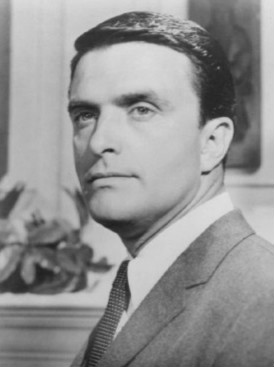|
Return To Peyton Place (film)
''Return to Peyton Place'' is a 1961 American drama film in color by De Luxe and CinemaScope, produced by Jerry Wald, directed by José Ferrer, and starring Carol Lynley, Tuesday Weld, Jeff Chandler, Eleanor Parker, Mary Astor, and Robert Sterling. The screenplay by Ronald Alexander is based on the 1959 novel ''Return to Peyton Place'' by Grace Metalious. The film was distributed by 20th Century Fox and is a sequel to their earlier film '' Peyton Place'' (1957). The film's storyline centers on the life and loves of bestselling author Allison MacKenzie. She has followed in the footsteps of her mother Constance by having an affair with a married man, her publisher Lewis Jackman (Chandler). She goes on to publish a tell-all novel that fictionalizes the scandal, homicide, suicide, incest, and moral hypocrisy that belies the tranquil façade of her hometown. She is quickly criticized by friends, family, and neighbors as a result. Plot ''The film takes place some eight to ten years a ... [...More Info...] [...Related Items...] OR: [Wikipedia] [Google] [Baidu] |
Film Poster
A film poster is a poster used to promote and advertise a film primarily to persuade paying customers into a theater to see it. Studios often print several posters that vary in size and content for various domestic and international markets. They normally contain an image with text. Today's posters often feature printed likenesses of the main actors. Prior to the 1980s, illustrations instead of photos were far more common. The text on film posters usually contains the film title in large lettering and often the names of the main actors. It may also include a tagline, the name of the director, names of characters, the release date, and other pertinent details to inform prospective viewers about the film. Film posters are often displayed inside and on the outside of movie theaters, and elsewhere on the street or in shops. The same images appear in the film exhibitor's pressbook and may also be used on websites, DVD (and historically VHS) packaging, flyers, advertisements in newspap ... [...More Info...] [...Related Items...] OR: [Wikipedia] [Google] [Baidu] |
CinemaScope
CinemaScope is an anamorphic lens series used, from 1953 to 1967, and less often later, for shooting widescreen films that, crucially, could be screened in theatres using existing equipment, albeit with a lens adapter. Its creation in 1953 by Spyros P. Skouras, the president of 20th Century Fox, marked the beginning of the modern anamorphic format in both principal 2.55:1, almost twice as wide as the previously common Academy format's 1.37:1 ratio. Although the technology behind the CinemaScope lens system was made obsolete by later developments, primarily advanced by Panavision, CinemaScope's anamorphic format has continued to this day. In film-industry jargon, the shortened form, 'Scope, is still widely used by both filmmakers and projectionists, although today it generally refers to any 2.35:1, 2.39:1, 2.40:1, or 2.55:1 presentation or, sometimes, the use of anamorphic lensing or projection in general. Bausch & Lomb won a 1954 Oscar for its development of the CinemaScope l ... [...More Info...] [...Related Items...] OR: [Wikipedia] [Google] [Baidu] |
Brett Halsey
Brett Halsey (born Charles Oliver Hand, June 20, 1933) is an American film actor, sometimes credited as Montgomery Ford. He appeared in B pictures and in European-made feature films. He originated the role of John Abbott on the soap opera ''The Young and the Restless'' (from May 1980 to March 1981). Halsey is a great-nephew of the United States Navy Admiral William F. Halsey Jr., also known as Bull Halsey, commander of the Pacific Allied naval forces during World War II. Universal Pictures selected Brett Halsey's acting name from the admiral. Career Interested in acting since he was a child, young Brett was employed as a page at CBS Television studios, where he met Jack Benny and Benny's wife, Mary Livingstone, who presented him to William Goetz, the head of Universal Pictures, who placed him in a school with other aspiring actors for the studio. Halsey appeared as Swift Otter, a Cheyenne Indian in the 1956 episodes "The Spirit of Hidden Valley" and "The Gentle Warrior" of t ... [...More Info...] [...Related Items...] OR: [Wikipedia] [Google] [Baidu] |
Luciana Paluzzi
Luciana Paluzzi (born 10 June 1937) is an Italian actress. She is perhaps best known for playing SPECTRE assassin Fiona Volpe in the fourth James Bond film, '' Thunderball'', but she had important roles in notable films of the 1960s and 1970s in both the Italian film industry and Hollywood, including '' Chuka'', ''The Green Slime'', ''99 Women'', ''Black Gunn'', ''The Klansman'' and ''The Sensuous Nurse''. Career Film Paluzzi was born in Rome and was brought up there. She went to Milan and studied naval engineering for two years at the Scientific Academy of Milan, being the only woman in her class. One of her first roles was an uncredited walk-on part in '' Three Coins in the Fountain'' (1954), which she got by chance through a friend of her father's who was invited for dinner and happened to be looking for a young actress doing a very short two-line role for director Jean Negulesco, thinking Paluzzi might be a fit. Negulesco had not been satisfied with the other actresses ... [...More Info...] [...Related Items...] OR: [Wikipedia] [Google] [Baidu] |
Michael Rossi (fictional Character)
Michael Rossi is a fictional character in the novel '' Peyton Place'' by Grace Metalious. Michael Rossi is a teacher and high school principal who had replaced Abner Firth, the preceding teacher and principal who had died of a heart attack. He becomes the love interest of Constance MacKenzie, a woman with a hidden past. The character of Rossi originally was called Tomas Makris, bearing the name and description of a Laconia resident and co-worker of Metalious's school teacher husband. However, Makris sued for libel, winning an out-of-court settlement for $60,000. Makris was renamed Michael Rossi in later printings, and in the film and TV series which derived from the novel. In editions published in the United Kingdom, he was called Michael Kyros; in ''Return to Peyton Place'', he was named Michael Rossi. In the 1957 movie '' Peyton Place'', Michael Rossi is played by Lee Philips. In the TV series '' Peyton Place'', which ran from 1964 to 1969, the character of Dr. Rossi was playe ... [...More Info...] [...Related Items...] OR: [Wikipedia] [Google] [Baidu] |
Constance MacKenzie ''Peyton Place (novel), Peyton Place'' by Grace Metalious. In the Peyton Place (film), subsequent film adaptation, she was played by Lana Turner; in the sequel ''Return to Peyton Place'', by Eleanor Parker; in the primetime television series, by Dorothy Malone (and briefly by Lola Albright); and in the daytime soap opera ''Return to Peyton Place (TV series), Return to Peyton Place'', by Bettye Ackerman and later by Susan Brown (American actress), Susan Brown.
Constance Standish was born and bred in the small New Hampshire community of Peyton Place; living with her widowed mother, Elizabeth Standish. Like most people in that community, she was repres ...
Constance MacKenzie (née Standish) is a fictional character in the 1956 novel A novel is a relatively long work of narrative fiction, typically written in prose and published as a book. The present English word for a long work of prose fiction derives from the for "new", "news", or "short story of something new", itsel ... [...More Info...] [...Related Items...] OR: [Wikipedia] [Google] [Baidu] |
Allison MacKenzie
''Peyton Place'' is a 1956 novel by the American author Grace Metalious. Set in New England in the time periods before and after World War II, the novel tells the story of three women who are forced to come to terms with their identity, both as women and as sexual beings, in a small, conservative, gossipy town. Metalious included recurring themes of hypocrisy, social inequities and class privilege in a tale that also includes incest, abortion, adultery, lust and murder. The novel sold 60,000 copies within the first ten days of its release, and it remained on ''The New York Times'' best seller list for 59 weeks. The novel spawned a franchise that would run through four decades. 20th Century-Fox adapted it as a movie in 1957, and Metalious wrote a follow-up novel that was published in 1959, titled ''Return to Peyton Place,'' which became a film in 1961 using the same name. The original 1956 novel was adapted again in 1964, in what became a prime time television series for 20th Cen ... [...More Info...] [...Related Items...] OR: [Wikipedia] [Google] [Baidu] |
Hypocrisy
Hypocrisy is the practice of engaging in the same behavior or activity for which one criticizes another or the practice of claiming to have moral standards or beliefs to which one's own behavior does not conform. In moral psychology, it is the failure to follow one's own expressed moral rules and principles. According to British political philosopher David Runciman, "Other kinds of hypocritical deception include claims to knowledge that one lacks, claims to a consistency that one cannot sustain, claims to a loyalty that one does not possess, claims to an identity that one does not hold". American political journalist Michael Gerson says that political hypocrisy is "the conscious use of a mask to fool the public and gain political benefit". Hypocrisy has been a subject of folk wisdom and wisdom literature from the beginnings of human history. Increasingly, since the 1980s, it has also become central to studies in behavioral economics, cognitive science, cultural psychology, de ... [...More Info...] [...Related Items...] OR: [Wikipedia] [Google] [Baidu] |
Morality
Morality () is the differentiation of intentions, decisions and actions between those that are distinguished as proper (right) and those that are improper (wrong). Morality can be a body of standards or principles derived from a code of conduct from a particular philosophy, religion or culture, or it can derive from a standard that a person believes should be universal. Morality may also be specifically synonymous with "goodness" or "rightness". Moral philosophy includes meta-ethics, which studies abstract issues such as moral ontology and moral epistemology, and normative ethics, which studies more concrete systems of moral decision-making such as deontological ethics and consequentialism. An example of normative ethical philosophy is the Golden Rule, which states: "One should treat others as one would like others to treat oneself." Immorality is the active opposition to morality (i.e. opposition to that which is good or right), while amorality is variously defined as an ... [...More Info...] [...Related Items...] OR: [Wikipedia] [Google] [Baidu] |
Incest
Incest ( ) is human sexual activity between family members or close relatives. This typically includes sexual activity between people in consanguinity (blood relations), and sometimes those related by affinity (marriage or stepfamily), adoption, or lineage. It is strictly forbidden and considered immoral in most societies, and can lead to an increased risk of genetic disorders in children. The incest taboo is one of the most widespread of all cultural taboos, both in present and in past societies. Most modern societies have laws regarding incest or social restrictions on closely consanguineous marriages. In societies where it is illegal, consensual adult incest is seen by some as a victimless crime. Some cultures extend the incest taboo to relatives with no consanguinity such as milk-siblings, step-siblings, and adoptive siblings, albeit sometimes with less intensity. Third-degree relatives (such as half-aunt, half-nephew, first cousin) on average have 12.5% common genetic heri ... [...More Info...] [...Related Items...] OR: [Wikipedia] [Google] [Baidu] |
Suicide
Suicide is the act of intentionally causing one's own death. Mental disorders (including depression, bipolar disorder, schizophrenia, personality disorders, anxiety disorders), physical disorders (such as chronic fatigue syndrome), and substance abuse (including alcoholism and the use of and withdrawal from benzodiazepines) are risk factors. Some suicides are impulsive acts due to stress (such as from financial or academic difficulties), relationship problems (such as breakups or divorces), or harassment and bullying. Those who have previously attempted suicide are at a higher risk for future attempts. Effective suicide prevention efforts include limiting access to methods of suicide such as firearms, drugs, and poisons; treating mental disorders and substance abuse; careful media reporting about suicide; and improving economic conditions. Although crisis hotlines are common resources, their effectiveness has not been well studied. The most commonly adopted metho ... [...More Info...] [...Related Items...] OR: [Wikipedia] [Google] [Baidu] |
Homicide
Homicide occurs when a person kills another person. A homicide requires only a volitional act or omission that causes the death of another, and thus a homicide may result from accidental, reckless, or negligent acts even if there is no intent to cause harm. Homicides can be divided into many overlapping legal categories, such as murder, manslaughter, justifiable homicide, assassination, killing in war (either following the laws of war or as a war crime), euthanasia, and capital punishment, depending on the circumstances of the death. These different types of homicides are often treated very differently in human societies; some are considered crimes, while others are permitted or even ordered by the legal system. Criminality Criminal homicide takes many forms including accidental killing or murder. Criminal homicide is divided into two broad categories, murder and manslaughter, based upon the state of mind and intent of the person who commits the homicide. A report ... [...More Info...] [...Related Items...] OR: [Wikipedia] [Google] [Baidu] |
_poster.jpg)





.jpg)
